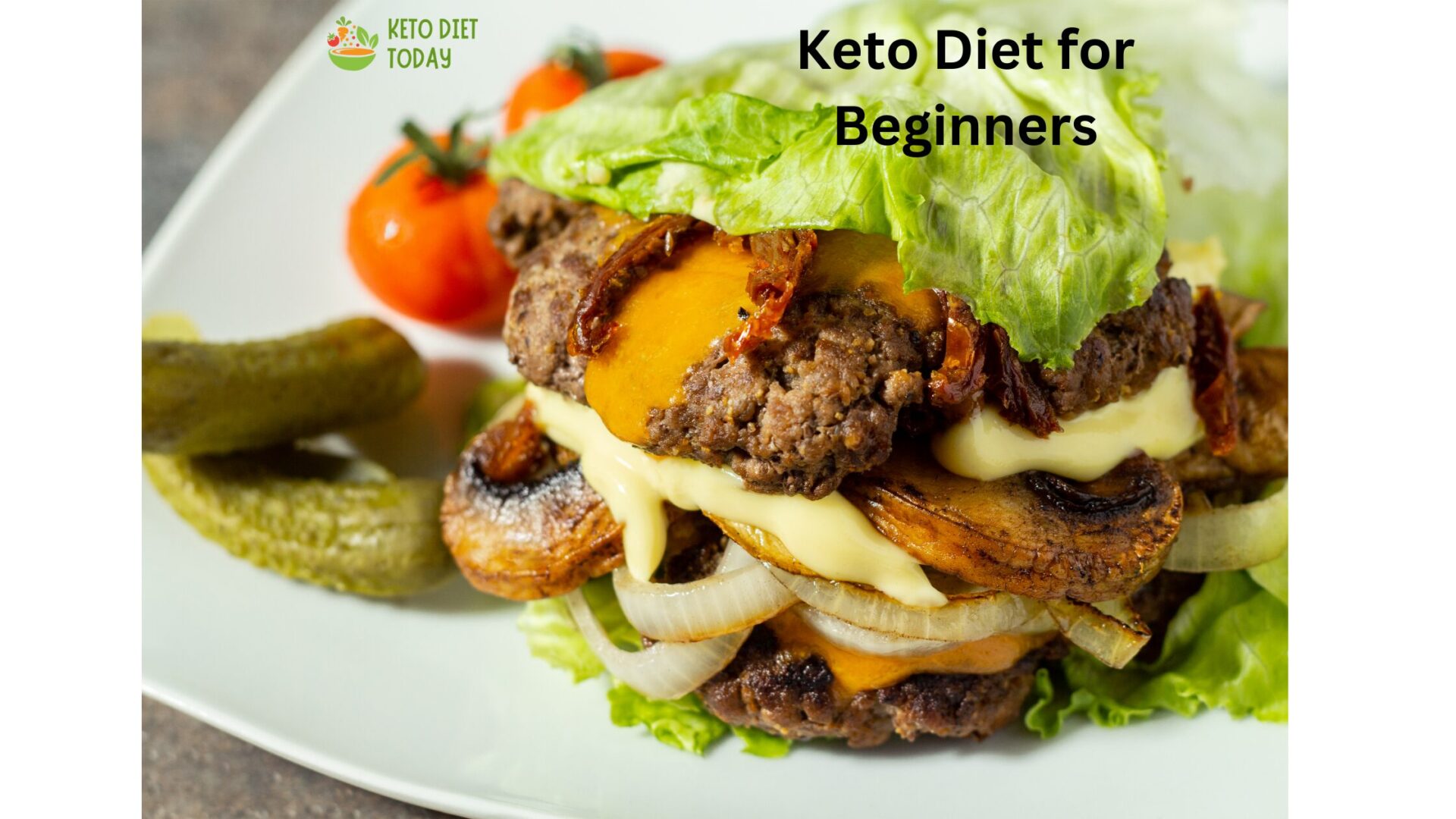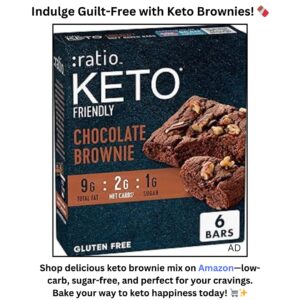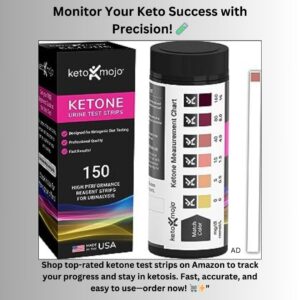Keto Diet for Beginners: A Comprehensive Guide to Getting Started

The keto diet has gained popularity for its effectiveness in promoting weight loss, improving mental clarity, and boosting energy levels. Designed to switch your body’s fuel source from carbohydrates to fats, it helps the body enter a metabolic state called ketosis. Whether you’re new to keto or just looking to refine your approach, this guide will cover everything you need to know about starting the keto diet for beginners, from how it works to easy meal planning strategies.
In this comprehensive guide, you’ll find explanations of keto’s benefits, how to avoid common mistakes, meal plans, and easy ways to stay on track with your ketogenic lifestyle. By the end, you’ll be ready to transition smoothly into ketosis and enjoy the many benefits that come with it.
What is the Keto Diet?
The keto diet is a high-fat, low-carbohydrate eating plan that alters your body’s metabolic state to burn fat for fuel instead of carbohydrates. By significantly lowering your carb intake (typically under 50 grams per day), your body shifts into ketosis—a process where the liver converts stored fat into ketones, which are then used for energy.
Instead of relying on glucose (sugar) from carbohydrates, your body becomes highly efficient at burning fat for energy. This switch helps you lose weight, sustain energy levels throughout the day, and improve mental clarity.
How Ketosis Works
Ketosis is the key metabolic state for the keto diet. Here’s a breakdown of the process:
- Carb reduction: When your carbohydrate intake drops, your body’s glycogen stores (stored sugar) in the liver and muscles deplete.
- Ketone production: Once glycogen is used up, the liver starts breaking down fat into ketones, which act as an alternative energy source for the body and brain.
- Fat as fuel: Ketones become the primary energy source, allowing your body to burn fat for fuel more efficiently.
- Fat adaptation: Over time, your body becomes fat-adapted, meaning it prefers burning fat as its main fuel source.
Benefits of the Keto Diet: Keto Diet for Beginners
The keto diet offers several health benefits, making it a popular choice for those aiming to improve both physical and mental well-being. Below are some key advantages of adopting a keto lifestyle:
1. Weight Loss
One of the most well-known benefits of the keto diet is weight loss. By switching the body’s fuel source from glucose to fat, ketosis promotes fat burning and can lead to significant reductions in body weight, especially abdominal fat.
- Increased fat burning: In ketosis, your body primarily burns fat, leading to more efficient fat loss.
- Appetite control: Keto meals are typically high in protein and fat, which promotes satiety and helps curb cravings.
2. Improved Mental Clarity and Focus
Many people report enhanced cognitive function while following the keto diet. This is because ketones provide a more stable and efficient energy source for the brain than glucose.
- Stable energy: Keto minimizes blood sugar fluctuations, helping maintain steady energy throughout the day and preventing brain fog.
- Neuroprotective properties: Some research suggests that the keto diet may protect against cognitive decline, supporting long-term brain health.
3. Better Blood Sugar Control
For individuals with diabetes or insulin resistance, the keto diet helps regulate blood sugar levels by significantly reducing carbohydrate intake.
- Lower blood sugar spikes: With fewer carbs, you experience fewer fluctuations in blood sugar levels.
- Increased insulin sensitivity: The keto diet has been shown to improve the body’s response to insulin, which is especially beneficial for those managing type 2 diabetes.
4. Enhanced Energy and Endurance
As your body becomes more efficient at burning fat for fuel, you may notice sustained energy levels and improved physical performance.
- No energy crashes: On the keto diet, your body relies on fats for energy, reducing the dramatic energy drops that often occur after consuming carbs.
- Improved stamina: Once you’re fat-adapted, you’ll likely notice increased endurance during exercise and daily activities.
5. Reduced Inflammation
The keto diet is also known for its anti-inflammatory effects. High-carb diets can promote inflammation in the body, which may lead to chronic pain and disease. By reducing carbs and incorporating healthy fats, the keto diet can help alleviate inflammation.
- Lower inflammation markers: Some studies have shown that keto reduces inflammation in the body, supporting overall health.
- Joint pain relief: Many people with conditions like arthritis report reduced pain and stiffness when following a ketogenic diet.
How to Start the Keto Diet for Beginners
Starting the keto diet can feel overwhelming, but following these steps will make the transition easier and set you up for success:
Step 1: Calculate Your Macros
Before starting the keto diet, it’s important to determine your macronutrient needs—specifically how much fat, protein, and carbohydrates you should eat daily. The standard keto macronutrient ratio is:
- 70-75% of calories from fat
- 20-25% from protein
- 5-10% from carbohydrates
To calculate your personalized macros, you can use an online keto macro calculator. This tool will help you tailor your diet to fit your weight loss or health goals by adjusting your fat, protein, and carb intake accordingly.
Step 2: Stock Your Kitchen with Keto-Friendly Foods
Once you know your macros, it’s time to fill your kitchen with keto-friendly foods. By having the right ingredients on hand, you’ll find it easier to prepare low-carb, high-fat meals that support ketosis.
Foods to Include:
- Fats and oils: Olive oil, coconut oil, butter, ghee, avocado oil
- Meat and poultry: Beef, chicken, turkey, lamb, pork
- Seafood: Salmon, sardines, tuna, mackerel, shrimp
- Eggs: Organic, pasture-raised eggs
- Low-carb vegetables: Spinach, kale, cauliflower, zucchini, broccoli
- Nuts and seeds: Almonds, walnuts, macadamia nuts, chia seeds, flaxseeds
- Dairy: Full-fat cheese, heavy cream, cream cheese, Greek yogurt (unsweetened)
- Berries (in moderation): Strawberries, raspberries, blackberries
Foods to Avoid:
- Grains and starches: Bread, rice, pasta, oats, quinoa
- Sugary foods: Soda, candy, pastries, desserts
- High-carb fruits: Bananas, apples, oranges, grapes
- Legumes: Beans, lentils, chickpeas
- Processed foods: Chips, crackers, processed meats
Step 3: Plan Your Meals
Meal planning is critical for staying on track with keto. Having a meal plan ensures you get the right macronutrients and prevents you from making impulsive food choices that could kick you out of ketosis.
Sample Keto Meal Plan:
- Breakfast: Scrambled eggs with avocado and bacon
- Lunch: Grilled chicken salad with olive oil and avocado
- Dinner: Salmon cooked in butter with roasted broccoli
- Snack: Almonds or celery sticks with cream cheese
Step 4: Stay Hydrated and Replenish Electrolytes
The keto diet can lead to increased water and electrolyte loss, especially in the initial stages. To avoid dehydration and electrolyte imbalances (which can cause symptoms of the “keto flu”), it’s crucial to drink plenty of water and replenish your electrolytes.
Tips for Hydration and Electrolytes:
- Drink at least 8-10 glasses of water daily.
- Add a pinch of salt to your water or take electrolyte supplements containing sodium, potassium, and magnesium.
- Eat foods rich in electrolytes, such as avocados, leafy greens, and nuts.
Common Keto Mistakes to Avoid
Beginners often make mistakes when transitioning to keto. Avoid these common pitfalls to maximize your chances of success with the Keto Diet for Beginners.
1. Eating Too Much Protein
While protein is important, consuming too much can hinder ketosis. Excess protein can be converted into glucose through a process called gluconeogenesis, which can prevent your body from staying in ketosis. Make sure to stick to your recommended protein intake.
2. Not Getting Enough Fats
Since fat is the primary energy source on keto, it’s essential to consume enough fats to fuel your body. If you don’t eat enough fat, you may feel fatigued or experience hunger more frequently. Be sure to include healthy fats like avocados, olive oil, and nuts in your meals.
3. Overeating Low-Carb Processed Foods
Many low-carb packaged foods, such as bars and snacks, are marketed as “keto-friendly,” but they often contain hidden carbs, unhealthy oils, or artificial sweeteners. Stick to whole, unprocessed foods as much as possible to ensure you’re staying within your carb limit.
4. Not Drinking Enough Water
Dehydration can lead to fatigue, headaches, and muscle cramps, especially during the first few weeks of keto. Make sure to drink plenty of water throughout the day to stay hydrated and avoid the “keto flu.”
5. Not Planning Ahead
Without proper meal planning, it’s easy to grab carb-heavy foods when you’re in a hurry or don’t have keto options available. Plan your meals for the week and prepare snacks ahead of time to ensure you always have keto-friendly options on hand.
Easy Keto Recipes for Beginners
To get you started on your keto journey, here are a few simple recipes that align with your macronutrient goals.
1. Keto Avocado Egg Salad
This creamy avocado egg salad is perfect for a quick and filling breakfast or lunch.
Ingredients:
- 4 hard-boiled eggs, chopped
- 1 ripe avocado
- 2 tablespoons mayonnaise
- 1 teaspoon Dijon mustard
- Salt and pepper to taste
Instructions:
- In a bowl, mash the avocado until smooth.
- Add the chopped eggs, mayonnaise, and mustard.
- Mix well and season with salt and pepper to taste.
- Serve with lettuce wraps or low-carb crackers.
2. Keto Bacon and Egg Cups
These bacon and egg cups are an easy, make-ahead breakfast that’s perfect for busy mornings.
Ingredients:
- 6 slices of bacon
- 6 large eggs
- Salt and pepper to taste
Instructions:
- Preheat the oven to 375°F (190°C).
- Cook bacon slices halfway until they are pliable but not crispy.
- Line a muffin tin with the bacon slices.
- Crack one egg into each bacon-lined cup.
- Season with salt and pepper and bake for 15 minutes, or until the eggs are set.
Staying on Track with the Keto Diet for Beginners
Sticking to the keto diet can be challenging at first, but consistency is key. Here are some tips to help you stay on track:
- Meal prep: Prepare your meals and snacks in advance to avoid temptation.
- Track your macros: Use a food tracking app to ensure you’re hitting your fat, protein, and carb targets.
- Stay flexible: Don’t be too hard on yourself if you slip up. Simply get back on track the next day.
- Find a support system: Join a keto community or find a keto buddy to share tips and recipes.
Conclusion: Keto Diet for Beginners
The keto diet is a powerful tool for weight loss, improved energy, and better mental focus. By understanding how ketosis works, planning your meals, and avoiding common mistakes, you can successfully transition into a ketogenic lifestyle. With the right approach and the recipes provided in this guide, you’ll be on your way to experiencing the many benefits of keto.
For more information on how to successfully start the keto diet for beginners check out Ruled.me’s comprehensive keto guide and Healthline’s keto diet breakdown.








